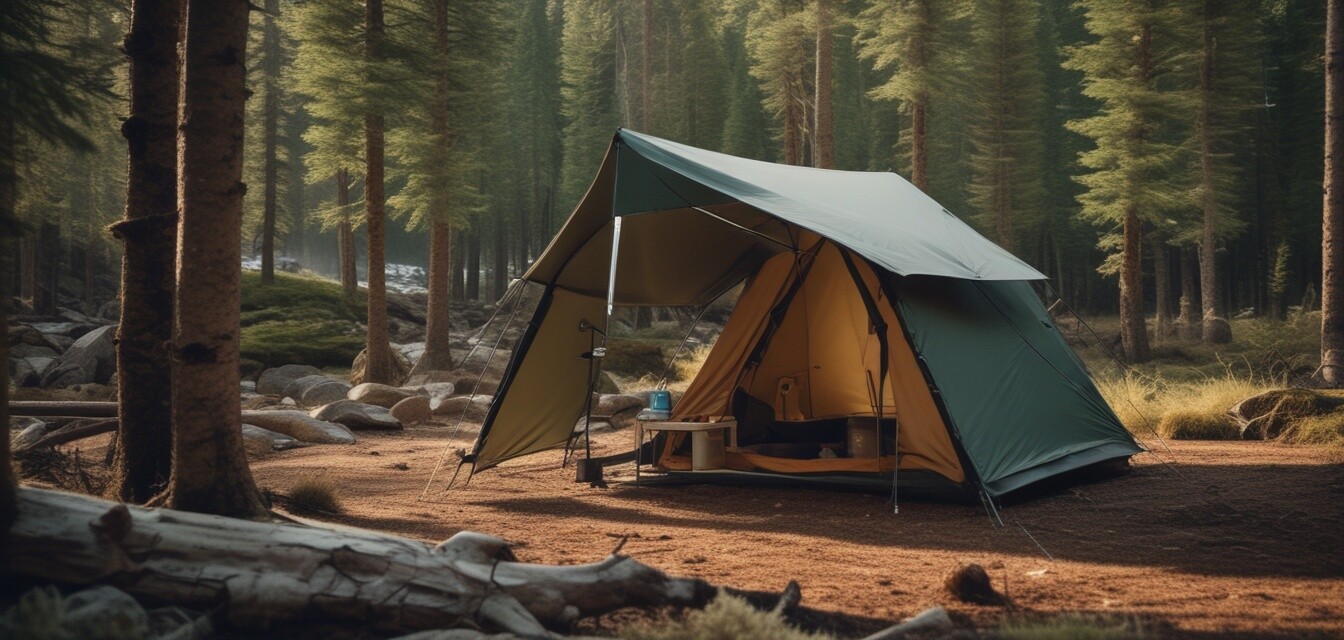
The Best Lightweight Tarps for Camping
Key Takeaways
- Lightweight tarps provide essential protection from the elements.
- Material choice impacts durability and weight significantly.
- Versatile use for camping, hiking, and various outdoor activities.
- Portability is crucial, especially for backpacking.
- Choosing the right size can enhance your camping experience.
As a beginner camper, choosing the right gear can feel overwhelming, especially when it comes to setup and protection from unpredictable weather. One essential item that often gets overlooked is the tarp. Lightweight tarps for camping offer portable, durable, and versatile solutions to keep you dry and comfortable in various weather conditions. They can be used as shelter, ground cover, or even a makeshift picnic area. In this guide, we'll break down the best options and what makes them essential for every camper's gear. For additional advice on selecting camping gear, you can check our comprehensive Camping Buying Guides.
Why Choose a Lightweight Tarp?
There's a myriad of reasons to include a lightweight tarp in your camping gear. Here are the most common advantages:
- Portability: Lightweight tarps are easy to carry, making them great for backpacking trips.
- Quick Setup: Most tarps can be set up quickly, which is crucial in adverse weather.
- Versatility: Use it as a shelter, ground cover, or even to create a makeshift tent.
- Weather Protection: Lightweight tarps can offer varying degrees of protection from the elements.
Key Features to Consider
Not all lightweight tarps are created equal. Here are several key features you should consider when making a purchase:
| Feature | Description |
|---|---|
| Material | Look for durable but lightweight options such as nylon or polyethylene. |
| Size | Choose a size based on your camping needs, whether solo or for group settings. |
| Weight | Confirm it meets your weight requirements, especially for backpacking. |
| Water Resistance | Ensure it's waterproof or has a high hydrostatic head rating. |
| Ease of Setup | Look for tarps that can be set up with versatile attachment points. |
Top Lightweight Tarps for Camping
Here’s a compiled table comparing some of the best lightweight tarps available for camping:
| Brand | Size | Weight | Material | Waterproof |
|---|---|---|---|---|
| Brand A | 10 x 12 ft | 2 lbs | Nylon | Yes |
| Brand B | 8 x 10 ft | 1.5 lbs | Polyethylene | Yes |
| Brand C | 6 x 8 ft | 1 lb | Nylon | Yes |
| Brand D | 12 x 16 ft | 3 lbs | Polyester | Yes |
How to Set Up a Tarp
Setting up your tarp can seem daunting, but with a few simple steps, you can have a reliable shelter in minutes. Here’s a quick guide:
- Choose a location: Look for a flat area away from falling branches and debris.
- Lay the tarp out: Unfold your tarp and spread it out with the underside facing up.
- Anchor the corners: Secure the corners with stakes or rocks to hold them in place.
- Raise the center: Attach a central pole or use trees to lift the tarp high enough for rain runoff.
- Tighten and adjust: Make sure the tarp is taut to prevent water pooling.
Maintenance and Care
Taking care of your tarp ensures its longevity. Here are a few tips:
- Always dry it before storage to prevent mold and mildew.
- Check for damage after every use and make repairs immediately.
- Store it in a cool, dry place.
- Avoid using it near sharp objects to minimize tears.
Conclusion
Lightweight tarps are an essential part of camping gear that every beginner should consider. Not only do they provide a versatile shelter from weather unpredictability, but they also enhance your camping experience significantly. By understanding what features to look for and how to set it up, you are already taking the next steps toward becoming a seasoned camper. Remember to check out our other guides like Tents & Shelters for more camping essentials.
Pros
- Lightweight and easy to carry.
- Versatile for multiple uses.
- Quick and easy setup.
- Water resistant for added protection.
Cons
- May require additional support for optimal setup.
- Some models may not be as durable under heavy winds.
- Versatility may lead to overpacking in some situations.
Tips for Beginners
- Test your tarp setup in your backyard before your camping trip to ensure confidence.
- Experiment with different tarp configurations for shelters.
- Always pack the tarp neatly for longer lifespan and ease of transport.